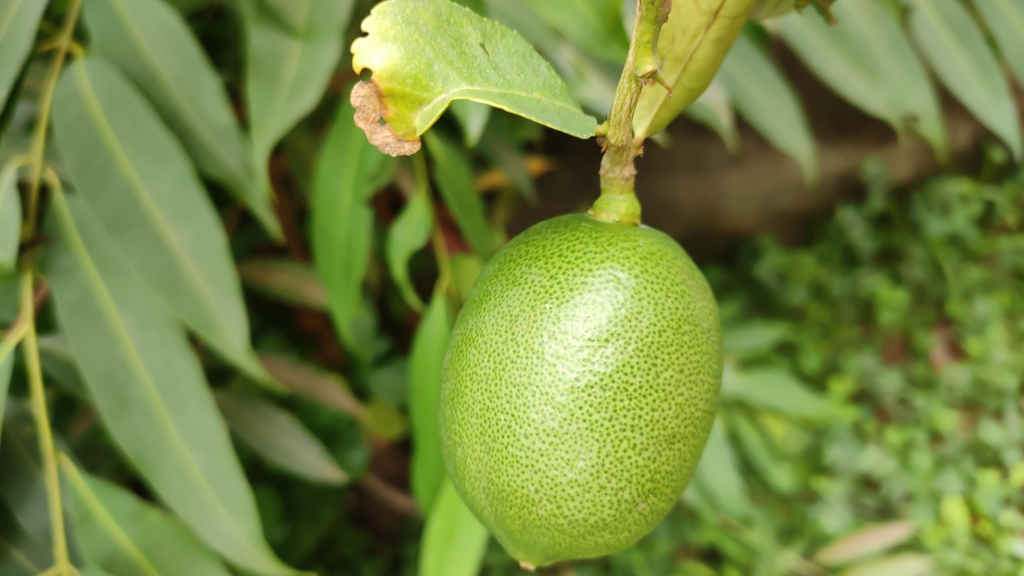Limes are an intrinsic part of Indian cuisine, mainly added as a condiment, more so in Bengal (Eastern part of India). The zesty flavoursome addition lime gives to food, drinks, desserts or salads, is inexplicable. Ever imagined a meal to be insipid with a sour flavour? Ask a Bengali! A hot plate of steamed rice, yellow lentils and a nonchalant squeeze of Gondhoraj lebu. That’s Bengali Nirvana! Every Bengali seems to be extra possessive about it.
Gondhoraj quite literally translates to ‘aroma of the king’ or ‘King of fragrance’. Owing to the cultural and dynamic terrestrial conditions, India has been blessed with a myriad of limes and lemons. From the football-sized grapefruit to the golf ball-sized acid lime, you have just too many options to choose from. There is the large, loose-skinned Nagpur orange, the yellow-green mosambi – but nothing compares to the innate aroma and taste of Gondhoraj lebu. In the modern context, Gondhoraj lebu can also be added into different alcohols such as vodka, gin, beer etc. to enhance the flavour of the same. Gondhoraj with beer or shandy is a must-try. It elevates the frothy drink to a level of unprecedented proportion. This variety of lime has also travelled all the way to England too! So, with all this having been said, let us know about the Gondhoraj Lebu a bit more!
Origin
Gondhoraj Lebu traces its roots in Sylhet and the hilly tracts of Chittagong, which are currently in Bangladesh. It is actually a cross between a lime and mandarin orange. Gondhoraj lebu is often confused for its close cousin, Kafer Lime, which is a staple sour flavour of Southeast Asian countries like Lao, Thailand and Singapore. Gondhoraj is oblong in shape and is required to be cut lengthwise.
Contrary to the pervasive notion, it is not a very juicy fruit, and sometimes one has to use their fingers and strength to extract its juice. But the tiniest drop can pep up the dullest and the most insipid food. It is used to resurrect any dish to its full potential, from its leaves squashed into a shredded mixture of shutki(dry fish) with generous servings of green chillies, to using its zest in fried or dried form on kosha mangsho (spicy chicken or mutton curry) or bhetki paturi (Barramundi Fish cooked by wrapping banana leaf).
Gondhoraj gains full marks in versatility. The aroma of Gondhoraj permeates the air really quickly and lingers for a considerable time. Some call it a mere romanticism of Bengalis but Gondhoraj has received adulation from food connoisseurs across the globe.
No, Not Nimboo
It will be almost blasphemous to call a Gondhoraj lebu, a mere nimbu before a Bengali. As all limes and lemons are from Persia to Indonesia- we should have been a more discerning market. But Indians insist on calling all limes nimboo, irrespective of appearance, taste and aroma. Most vendors only stock ripe yellow limes anyway, so there is no incentive to differentiate. No one in their right mind should have such blurred perceptions about our Gondhoraj. Most nimboos in India are invariably added as a garnish after the cooking process is over, or presented as quarters on the plate according to taste, or made in pickles, brines or spiced oils. But that would downplay the essence of Gondhoraj lebu. It is much more than a mere condiment; it is a celebration of culinary adventures of Bengali cuisine.
Uses.
It is quite a traditional convention in Eastern India, to start most authentic meals, celebratory or otherwise, with a wedge of lemon and a pinch of salt. If you do not want to squeeze that tart fruit over any of the dishes, you could always use it at the end to wash the oiliness off your hands. Intimate meals with family and friends always feature the Gondhoraj lebu – in a bowl that it shares with green chillies. The leaves of the Gondhoraj lebu has an intense fragrance as well. In fact, they are used to flavour the gondhoraj bhaat, where leaves are layered with the rice. If there are no limes in the garden, the leaves can be used to flavour lentils and pulses – Masoor dal or bhaja moong dal. Gondhoraj lebu has the arcane ability to push people into a frenzy of happy memories, especially for a Bengali.
Cultivation.
Gondhoraj lebu is an emotion for Bengalis. It is their best-kept secret in the culinary invasion which ultimately entails into a love affair. This King of lime is true to its soil. The culinary love affair comes to an end once you set out of the borders of Bengal. Because the King is indeed true to its land, refusing to grow anywhere but Bengal. Maybe it is a stubborn believer of Amar Bangla, Amar Aloy (My Bengal, my home). Or Maybe the land of Tagore and Bose is too hard to be left behind for our very own “Your majesty!”
Conclusion
Gondhoraj lebu has surpassed its peripheral shortcoming and garnered eulogies and praises from food connoisseurs and food critics, across the globe. It has never flinched in its flavour or aroma. So next time you end up with a boring cuisine, surprise your taste buds with a generous squeeze of our very own Gondhoraj lebu. Besides Gondhraj Lebu, click here to know about the official fruit of Kerala.

